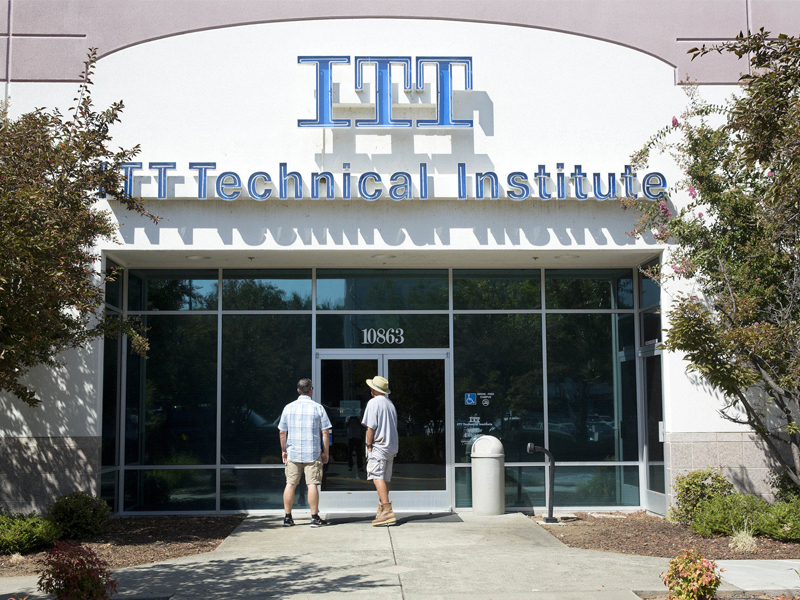Forty Thousand Students Screwed…What Now?
Education

It’s terrible news. ITT, an institution with 40,000 students enrolled in 137 campuses across 39 states, is ceasing all enrollment. In other words, the place is toast.
Now those 40,000 students have the honor of graduating from a school that is now Closed For Business. That’s not going to look too good on a resume.
According to reports, the Education Department has suggested it will forgive the federal loans of existing students. My guess is that over 85% of those students do have some type federal loans. Good for students…bad for the taxpayers who will end up eating the cost.
ITT is just the latest in a string of setbacks for this sector. Earlier this year, Education Management Corporation announced it would close 22 of the 26 Brown Mackie campuses across the country over the next few years, and that the college would not accept any new students.
Even schools like DeVry, Kaplan and the once mammoth University of Phoenix are continuing to struggle and it wouldn’t surprise me if one or more went the same way as ITT.
For-profits —what’s now?
BVK is an agency that has been working with for-profits for nearly 20 years. Based on what we know and have seen work, we offer two strategic recommendations.
The first recommendation is to consider some significant operational changes:
- Minimize costs. Given the dire straits many of these schools are in, some will need to close up even more campuses and re-look at the number of programs they offer. True this has happened to a degree, but they will need to go deeper. And they can do this by matching up the courses they offer with the current job market. Certain programs like Graphic design and gaming — courses that are very popular, may not make the cut. Because while they bring in students, unfortunately there are not that many jobs in those fields.
- Re-evaluate bachelor’s and Master’s degree programs: Certain for-profits may not be able to compete with public and private schools in this area (nursing may be the exception) so these schools may need to focus in the areas where there is less competition and really own that space.
- Partner with business: There’s a steady flow of articles about manufacturing bemoaning the fact it doesn’t have enough qualified employees. Now’s the time to double-down and connect with businesses to provide them a steady pipeline of qualified candidates. This is happening…but the pace needs to accelerate. Connecting with businesses and helping to ensure a student with a job after graduation is a way for-profits can provide a value to the people they claim they want to help. For any interested we have an entire CAREERSHIP program we would like to talk to you about.
The second recommendation: invest in the brand.
By and large, these schools need to answer some fundamental questions: why do they exist? What are they offering that people want more of or feel is missing from their lives? And how are they doing this better than other players in the same space?
The sad truth is many (not all) in this space can’t answer these questions even if they tried. Not even close. Because instead of spending their time and energy creating a brand, rooted in a cause that’s focused on improving the lives of those they serve…they spend a disproportionate amount of effort on the next start session. In this space they call it butts in seats.
But it doesn’t have to be an either/or story!
Schools can do both. By building a brand they can actually drive business. This is something we have been preaching, arguing and discussing for years because we have the proof to show that it actually works.
It worked for Carrington.
It worked for Chamberlain.
It’s working for Bryant & Stratton. Check out our case study.
In the months ahead, the pressure on for-profits to change will increase. The current administration has been no friend of this sector. The next probably won’t be either. There is no more time to wait.
Unfortunately, many in this space are too far along, too committed to an old model to change their direction. For them it’s a matter of managing the decline. Think Blockbuster.
But it’s not just the for-profits that are in trouble
While for-profits have certainly suffered, many colleges and universities are also fighting to keep their doors open. The numbers are frightening. Approximately one third of all colleges and universities in the U.S. are on an unsustainable financial path, according to a report from Bain & Co. One third! And the pressure is especially hard on those schools with fewer than 5,000 students.
According to the 2016 report from Parthenon-EY nearly 800 institutions face critical challenges because of their inefficiencies or small size. And since 2010 the smallest institutions, those under 1,000 students have been losing the most enrollments vs. the larger institutions those over 10,000 which have posted some growth.
As enrollments shrink and the cost of secondary education increases, more and more schools will be fighting over a smaller pool of students. That’s a difficult situation to be in. But for those schools open and willing to make the necessary changes to not only stay open but grow…we would love to talk to you.